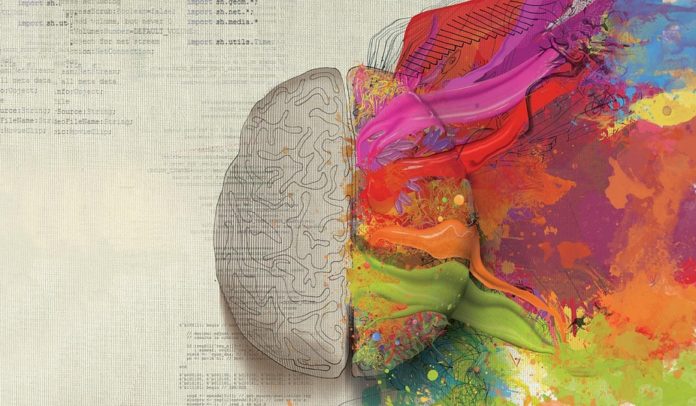Meeting of the Minds
Table of Contents
Relationships can sometimes feel like building a house in the middle of a storm. It takes an amazing amount of balance, courage, craftsmanship, concentration, and guesswork in order to build a safe haven while the winds of doubt and fear constantly threaten to blow away what you’re trying to create. And the partner with whom you’re sharing this experience brings along an entirely different set of tools that you must figure out how to use in order to complete the shared goal of safety. It can be scary, for sure, but if you figure out how to work together and utilize everything you both bring, you will not only create a safe shelter, but you will construct the home that will protect you throughout the adventure of life.
Our personalities are created by the building blocks of life experience: family guidance,
education, community influence, and religious upbringing (or lack thereof).
There are also internal architects at work that draw lines, which create our perceptions
and responses, and each individual mind has its own blueprint. So how can we reconcile two minds with very different wiring into the same couple’s dream house? And how can we learn to work together, especially during times when we seem to have nothing in common?
The answers are both simple and complicated. If you want to share electricity, you must first understand how each of you is wired.
“Men need love just as much as women, they just need it in different ways.”– Dr. John Gray
Left Against Right
In 1981 Roger Sperry won a Nobel Prize for his breakthrough research that found that the brain divides activities into the left and right hemispheres, and the world hasn’t been the same since. Countless studies, tests, books, presentations and discussions have happened
since that revolutionary discovery that offered tremendous insight into the ways people interpret information differently.
We’ve all heard it said that the left-brain is associated with logic while the right is associated with creativity and intuition. According to respected psychiatrist and author, Dr. Iain McGilchrist, these claims are inaccurate. “One side isn’t solely responsible for reason
and logic and the other for emotion and imagination; we need both hemispheres for all of these functions.”
Our left and right brains allow us to view reality with two different approaches. The brain is divided into four main lobes or regions: frontal (forethought and judgment), temporal (memory and mood stability), parietal (sensory processing and direction sense), and occipital lobes (visual processing). There are also important structures deep in the brain, such as the anterior cingulate gyrus (gear shifter), basal ganglia (anxiety and pleasure center), and deep limbic system (emotional center). The cerebral cortex manages
rational functions and is divided into two hemispheres connected by a band of nerve fibers, known as the corpus callosum. These fibers relay messages back and forth between the two sides of the brain.
While both sides are utilized in nearly every activity, the left side of the brain manages the tools of language and works in a logical and sequential order. On the right side, visual information is processed, as are non-linear concepts like creativity.
The right brain is actually hugely responsible for the ideas that come to use in our dreams while we are sleeping. According to Jay Alfred, author of Brains and Realities, one of the founding fathers of quantum physics, Niels Bohr, came up with the concept of using a planetary system as the model for atoms. This concept led to the ‘Bohr model’ of atomic structure, which went on to win the Nobel Prize. This is a great example of the left and right brain processes working in tandem.
A 1999 study indicates that you may be able to know whether a person is predominantly left or right brained by observing the direction their eyes move. Canada’s Robarts Research Institute studied conjugate lateral eye movements (CLEMS), which are involuntary eye movements to the left or right that can indicate a person’s way of thinking. The results showed that people are predominantly left or right lookers and that 75% of their eye movements will be in one direction or the other. People with a tendency to glance to the right are more likely to be a left-brain, analytical type while creative, right-brain personalities will more often glance to the left.
Though some people have personalities that sit near the center of the scale, most have a dominant side. Just like being right-handed, the human brain is wired to lead with one side over the other. Knowing which side you and your partner tend toward can go a long way to
diffusing conflicts when they arise.
Do you know your brain hemisphere preference? Take a look at these brief descriptions as presented by noted human consciousness pioneer and founder of The Monroe Institute, Robert Monroe. Does one list fit you better than the other?
Left Hemisphere Style: RATIONAL
♥ Responds to verbal instructions
♥ Looks for sequence
♥ Looks at differences
♥ Prefers to plan
♥ Prefers established information
♥ Prefers talking and writing
♥ Prefers multiple choice tests
♥ Controls feelings
♥ Sees cause and effect
Right Hemisphere Style: INTUITIVE
♥ Responds to visual instructions
♥ Looks for patterns
♥ Looks at similarities
♥ Prefers spontaneity
♥ Prefers elusive information
♥ Prefers drawing and manipulating objects
♥ Prefers open ended questions
♥ Free with feelings
♥ Sees correspondences
In her book When Opposites Attract, Rebecca Cutter outlines the different ways right-brain
and left-brain people approach relationships. A left-brain thinker will start with the facts
and then process through the emotions, while a right brain thinker will start with the emotions and then bring in the facts.
Where two right brain people in a romantic relationship will use communication to feel more emotionally connected, two left-brain people will use communication to find a solution. In a relationship between opposite brains, the potential for conflict is obvious. How will two people with opposite approaches to life get along?
“Love, the magician, knows this little trick whereby two people walk in different directions
yet always remain side by side.”– Hugh Prather
Common Complaints About A Left Brain Partner
1. Is emotionally unavailable to me.
2. Is preoccupied when we are together; obsessive.
3. Is not in the here and now; always in the past or future.
4. Is too inhibited; can’t let go and play.
5. Is insensitive; too blunt.
Common Complaints About A Right Brain Partner
1. Gets too emotional when talking about problems.
2. Wants too much of my companionship.
3. Is too extroverted; draws attention.
4. Won’t stay on one topic.
5. Does not take a logical approach to problem solving.
NEURO-CISE: RIGHT/LEFT BRAIN, SOLO
Here’s a list of exercises showing which side of the brain will get the workout.
♥ Meditation (Right)
♥ Crossword puzzles (Left)
♥ Picturing a familiar face (Right)
♥ Calculations (Left)
♥ Writing with your non-dominant hand (Right)
♥ Writing with your dominant hand (Left)
♥ Fantasizing (Right)
♥ Organizing (Left)
♥ Repetitive movements (Right)
♥ Remembering a name (Left)
♥ Making love (Right)
♥ Analyzing a work of art (Left)
♥ Imagining how you would decorate a room (Right)
♥ Debating an issue (Left)
NEURO-CISE: BRAIN ACTIVATION, SOLO
If you wish to activate only the right side of the brain, you can close your right nostril by pressing your finger against it, and breathe only through the left nostril, thus activating the right side of the brain. You can also close the right nostril to activate the left side of your brain. This is a quick and easy way to tap into either brain hemisphere. If you wish to activate both sides of your brain, you can first close one nostril, breathe in and breathe out through your nose, then close the other nostril, breathe in and breathe out. This is an ancient yogi technique known as “Swara yoga” which leads to balance of both brain hemispheres.
NEURO-CISE: BRAIN ACTIVATION, DUO
You can activate sides of the brain by stimulating the opposite side of the body. The right brain awakens with a touch on the left side and vice versa, so a way to incorporate brain exercise with your physical intimacy is to take a tour of your partner’s body, alternating from one side to the other. Consider taking this path for full body and full brain stimulation,
and remember to take a pause between each side for the best effect:
♥ Temple
♥ Cheek
♥ Side of the mouth
♥ Ear
♥ Neck
♥ Shoulder
♥ Upper arm
♥ Forearm
♥ Hand
♥ Breast
♥ Ribcage
♥ Waist
♥ Outer thigh
♥ Inner thigh
♥ Buttock
♥ Calf
♥ Ankle
♥ Top of foot
♥ Bottom of foot
♥ Toes




























